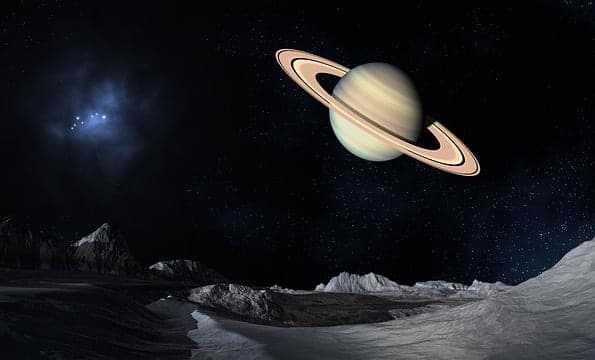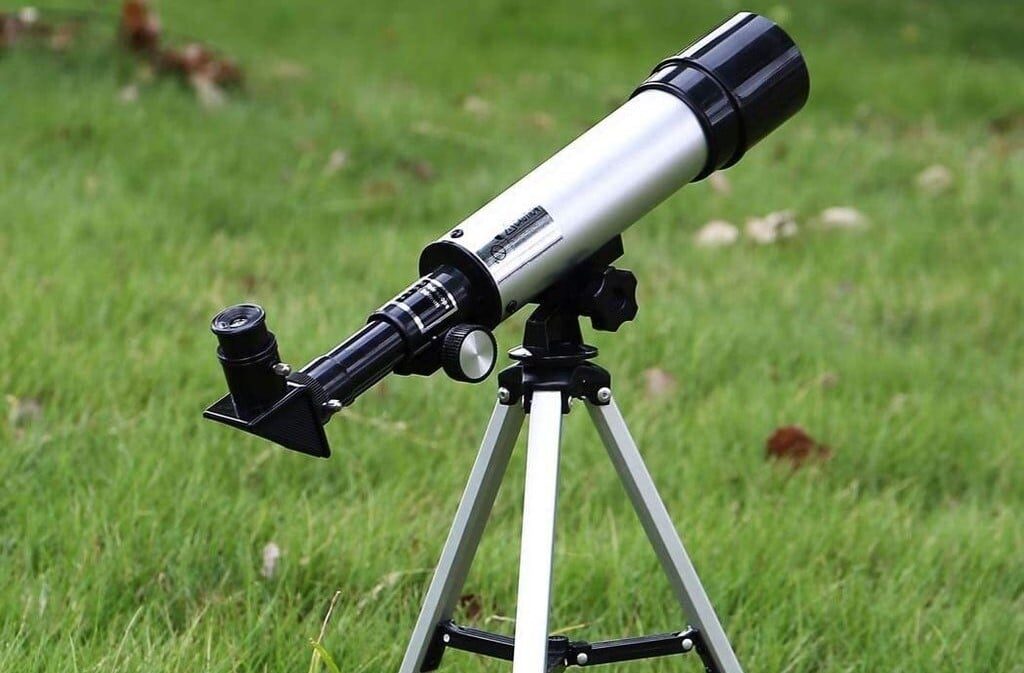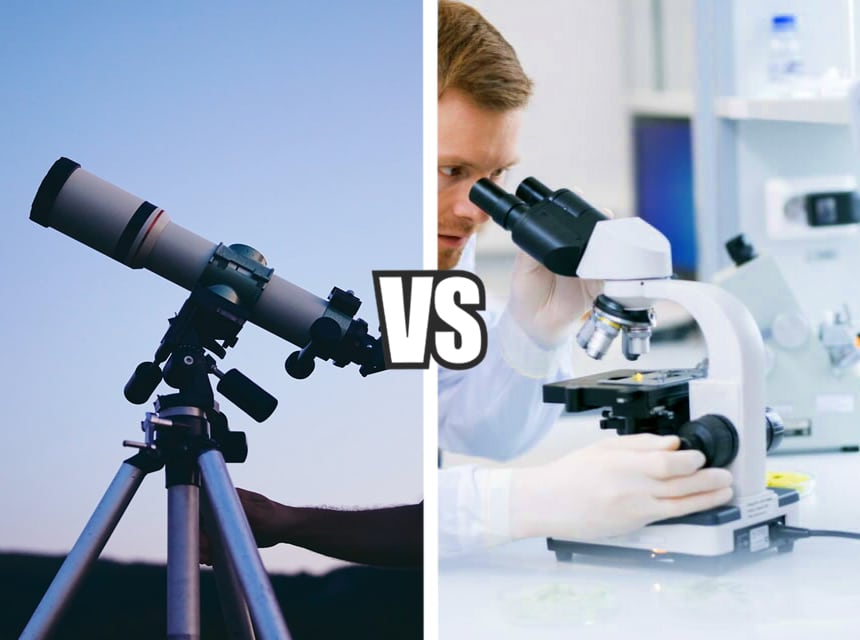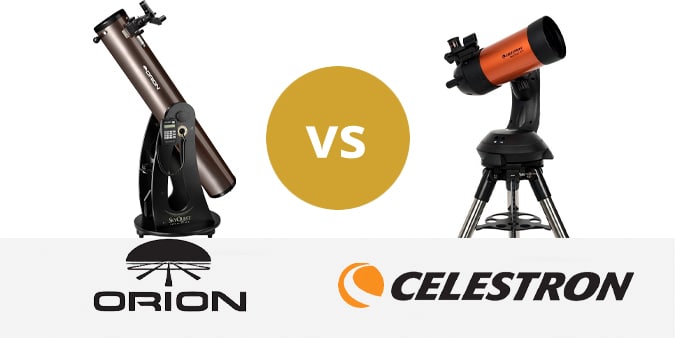

If you were provided a budget of $500 to pick whatever telescope you want, do you think you would select the right option? Unfortunately, a high number of people seem to be getting something wrong when trying to pick the best telescope under $500. If we were to bet on what it is that you’re doing wrong, it would be that you are rushing into the purchase without any research and reliable information.
Seemingly, the situation above is something you can easily avoid by looking at the telescopes reviewed and featured below. They weren’t picked at random. Instead, we examined specific features on each model, including the type, aperture, magnification, and more. Remember that the “type” classification shows you how the product works and that may influence benefits. Also, aperture, magnification, and focal length are at the forefront of dictating image quality. Eyepiece diameter should feature as well, although it is mostly a matter of preference. The last two major features are the weight of the telescope and the mount. By adding extra features, the telescope can become an even better prospect. If you use these features to judge for yourself which are the best telescopes under $500, we have no doubt that you would make an excellent purchase.
Other features: Integrated D.C. Electronics motor, StarPointer finderscope, StarBright XLT optical coating, camera control
Despite looking small, there is no doubt that a lot of technology has been packed into the Celestron NexStar 4SE 11049. It is as well no secret that amateur sky viewers will want something like this since it makes their work a lot easier. They are required to do the sky alignment of the device, after which the machine takes over.
Before you even purchase the compact beginner telescope under $500, you should know that it has a database of 40,000 objects in the sky. To see any of these, you may need to use the hand control.
The manufacturer also knows that amateur viewers may know next to nothing about astronomy. As such, picking what to view from the 40,000-item list may be a tall order. Consequently, the telescope is capable of choosing what to show for the user.
Remember that it is electronic, and once it has been aligned properly, it can easily locate all the 40,000 objects. For power, it incorporates a battery compartment so that you don’t have to deal with tangled cables.
Also, no one wants to stay an amateur astronomer forever. The manufacturer knows this and provides data on the various objects for viewing, which is availed on the LCD.
If you look at the mount, you will see that the construction is solid steel, which is an excellent choice for durability. Additionally, this component and the single fork arm can be detached if you want to take your telescope somewhere outside your home.
Upgradability is as well not impossible. You can update your tool’s software over the internet. You can as well connect your PC or use the auxiliary port to connect other accessories to the Telescope.
An addition to the list of impressive aspects of the tool is the focal length and the magnification.
Other features: Vixen-style dovetail receiver, full-size aluminum tripod with accessory tray, audioStar hand controller – 30,000+ celestial objects library
Another high-quality, high-value telescope you can get for your money is the Meade StarNavigator NG. One of this device’s top-selling features is the dual focal length. You can pick between 1250mm and 1900mm.
The product also incorporates a GoTo Single-Arm Mount. Worth remembering is that the product is computerized with a database of 30,000 objects. Users use the hand controller to choose which object they want to see, and the product aligns itself accordingly.
Accessories are as well included in the package that could help with your stargazing experience. Among them are the two eyepiece options, aluminum tripod with an accessory tray and more.
To power the device, you will need eight AA batteries, which can be substituted for an external power supply. However, the AA batteries don’t come with wires; hence are more convenient.
Lastly, at 14 lbs, this Telescope is one of the lightest ones in the market.
Other features: 2″ Crayford-style focuser with 1.25″ adaptor, 8×50 finderscope, solid rocker mount with Teflon bearings and tension clutch
For amateur astronomers who want more control over the section of the sky they are looking at, the Sky Watcher Flextube 200P S11700 may be the ideal telescope they can get for under $500.
The aperture on this telescope is quite large and indeed a source of pride for the manufacturer. Also, it is coupled with an impressive focal length of 1200mm.
Included in the package are all the accessories you would ever need. This consists of the Crayford-style focuser, the adapter, and the mount. Speaking of the mount, it is sturdy, while at the same time, it allows for smooth transitions due to the tension clutch and the Teflon bearings.
Where weight is concerned, some people might have a problem transporting the tool since it is 27 lbs. Contrast that with the Celestron NexStar 4SE 11049, and you can see this telescope weighs more than 2X the weight of the editor’s choice.
Also, if you were to look at the dimensions of the fully-elongated telescope, you would probably be intimidated by its size. Nonetheless, the product is divided into two sections, namely the front and back cells of the telescope. These can be collapsed together to allow for more compact transportation.
Other features: StarSense dock for your smartphone, patent-pending StarSense sky recognition technology
The Celestron Starsense Explorer DX looks like an impressive piece of engineering from the get-go, and it doesn’t disappoint. It’s a refractor-type telescope with a 102 mm aperture, so it’s pretty effective at collecting light and allowing you a clear view of the night sky. Additionally, it’s mounted on an altazimuth mount offering slow motion control, which might come in handy when looking for particular celestial objects.
One reason to pick this telescope is the smartphone compatibility. In fact, you can link it up with almost any modern smartphone after the iPhone 6 or using android 7.1.2 or later. With that, you don’t need things like star charts or computerized mounts to locate any of the astronomical objects you’re interested in. Instead, you can just use this telescope and your smartphone.
Its effectiveness can be attributed to the patent-pending Lost in Space Algorithm, LISA, which the telescope uses to reorient itself. The device, in combination with the StarSense Explorer app, can then provide a list of visible celestial bodies. Additionally, once you select any option, the screen’s arrows can show you how to locate it. This method is a little more effective than most smartphone astronomy apps which rely on phone sensors to triangulate the position of various bodies.
The Celestron Starsense Explorer DX seems to work even in the city. Consequently, you won’t have to worry about city lights or have to take a camping trip for an evening of observing the night sky.
Other features: 9×50 finderscope, 2″ single-speed Crayford-style focuser with 1.25″ adaptor, solid rocker-mount with Teflon bearings and tension clutch
Another Sky Watcher product with an eight-inch aperture makes it onto this list of top telescopes under $500. True to its name, the product will allow you to gaze into the night sky and marvel at the splendor of the universe. To help in this endeavor, it incorporates 406x magnification and a focal length of 1200 mm.
Since this is a Newtonian telescope, the main components responsible for bringing you images from the night sky are two mirrors. One is a concave mirror, while the other is a flat diagonal mirror.
One also cannot forget the inclusion of the two eyepiece options, a focuser with an adapter, as well as additional accessories to this 34-pound Telescope.
Other features: ultra high transmission coatings, AutoStar hand controller with 30,000 object library
The Meade ETX-90 205004 is similar to the Celestron NexStar 4SE 11049 in more ways than one. One obvious one is that it is computerized. It is thus unsurprising that it has a database that allows you to select what to view from 30,000 options.
The goto telescope under 500 as well is of the Maksutov-Cassegrain variation. This means that it combines a spherical mirror and a meniscus lens in its construction. Another area of similarity is the small aperture, although this is even less than that of the editor’s choice.
Nevertheless, it is guaranteed that you won’t have a shortage of astronomical marvels to look at. As seen above, the magnification allowed by this tool is fantastic. However, this can sometimes limit the field of view.
Giving you control over the whole device is the Autostar hand controller. It is with this component that you will be able to pick and choose which parts of the night sky you would like to view.
Lastly, the tool doesn’t need to be confined to your home. You can make use of the hard carry case to carry your full-size aluminum tripod. This is alongside the optical tube and all other necessary accessories.
The list above may leave some of you even more confused than you were before. The options all seem like they would serve you well. However, there is a catch in that each model works only in a particular segment of the market. The buying guide below will educate you on which section of the market you belong to. It will also provide in-depth data about telescopes that will help you make a better purchase choice.

A telescope at this price range is relatively affordable and offers you the opportunity of exploring astronomy, whether as a beginner or a pro. Also, there are various telescope options for a variety of users in this price range. Beginners, for instance, can be better served by computerized telescopes, which will guide them in their stargazing journey. You also have the telescopes under $500 that allow you complete control. As such, you have telescopes for everybody at this price range.
When experts say that a certain telescope is better than another, they aren’t guessing. They have made that assertion after going through the various features offered by both products. Consequently, they can see the perceived benefits are superior to that of the competition.
The same thing is what you should be doing with your purchase. You weigh the pros and cons of each option and note the differences in features. However, doing this requires a firm understanding of the features, which is why the section below is beneficial to you. It explains the features you will encounter and how they can affect your stargazing experience.
Some would say the aperture is one of the most essential features to think about when it comes to astronomy and telescopes. We also agree. Remember that the bigger the aperture, the better.
It should be noted that aperture influences the sharpness and brightness of the image seen in the telescope. This is to say that with a larger aperture, you get to see a brighter, more defined image. This gives the Sky Watcher models a boost in their rankings above. One example is the Sky Watcher Flextube 200P S11700 telescope with its 8” aperture.
If you want a product with sufficient brightness and sharpness, the lowest you should be willing to go is 2.8” or 70mm.
Fortunately, all the products listed above check that box.
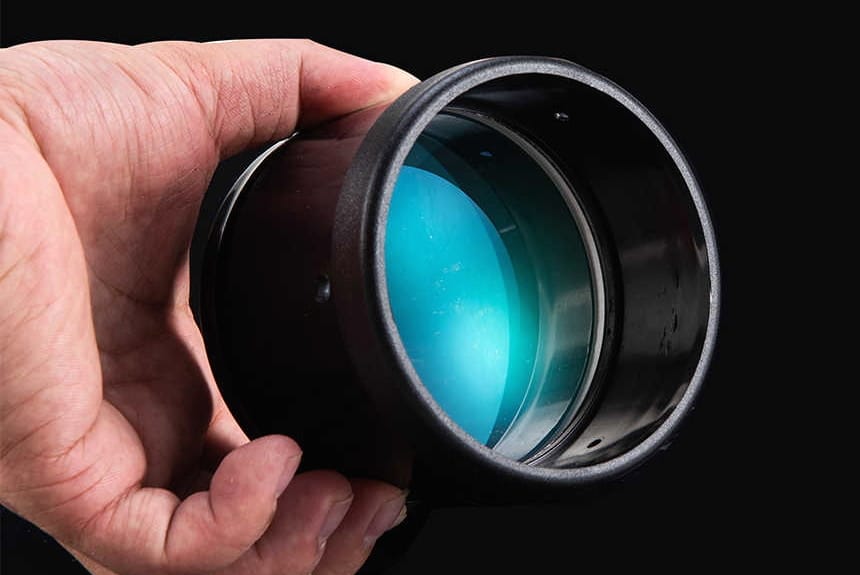
When looking at the magnification of a telescope, there is a maximum value that can be reached. Often this value is 50 times the aperture value of your device in inches. If you try going past that, the images tend to dip in quality. Also, if you multiply your aperture in mm by two, you should get the same thing showing you your limits with regards to magnification.
Sifting through the various telescope types is also something you have to do. All options available will carry different problems and benefits. Refractor telescopes, for example, are quite common.
When you look at refractor telescopes, they all seem to have the same build. A lens is provided on the front end of a tube with the eyepiece being at the back. This is the same technology used in the creation of telephoto lenses for camera users and binoculars as well.
A benefit of buying refractor telescopes is that they are durable and rugged. You will hardly ever find their optical components misaligned. The glass components of the telescope also don’t need to be cleaned often. They are sealed from the atmosphere and, as a result, don’t get dirty often.
Additionally, the air currents and temperature don’t affect as much of the image as they do with reflector telescopes. However, nothing is perfect; hence refractor telescopes show a bit of color distortion in the images they provide. This is why people see a rainbow on the edge of the images provided by the telescope.
Rather than a lens, reflector telescopes are true to their name in that they use curved mirrors in their construction. These reflect light and form an image to be viewed at the eyepiece. This design allows manufacturers to use large objective mirrors. As a result, these telescopes are the most used in astronomy research.
Researchers like reflectors because they don’t suffer chromatic aberration. Also, if you are going to build a large telescope, it would be cheaper to go with a reflector option. The last benefit is that the back of the mirror can be touched without affecting the image. This makes mounting a breeze.
You also need to know the downsides of these astronomy tools. The mirrors for one need regular cleaning since these devices feature open designs. Also, if air currents are created inside the telescope due to temperatures differing from the outside, images produced will be fuzzy.
You also have two sub-groups of reflector telescopes, namely the Newtonian and Dobsonian telescopes. The first consists of a primary concave mirror complemented by a secondary but flat diagonal mirror.
Their size and their Altazimuth mounting can differentiate Dobsonian telescopes from the Newtonian ones. They are large and can be rotated two ways to give you ample coverage of the sky.

Some telescope manufacturers combine the technology in both reflector and refractor telescopes to form compound telescopes. In this category, there are two competing types as well. They include the Maksutov-Cassegrain and the Schmidt-Cassegrain.
The Schmidt-Cassegrain can be considered to be mostly a reflector telescope. However, a corrector lens is incorporated, whose purpose is to remove aberrations from the images. The Maksutov-Cassegrain seems to have the same design. However, instead of a secondary mirror, the product uses an aluminized small spot in the corrector lens instead.
Maksutov-Cassegrain telescopes are made for small apertures while their counterparts are made for large apertures. Both types of Cassegrains or compound telescopes share a lot of the same benefits. They are compact, portable, maintenance-free, and optical quality is fantastic.
Their downsides include being pricey despite not being as expensive as refractors. Also, the mounts of most compound telescopes are more cumbersome, and lastly, they can take longer to cool down after use.
You might as well need to pay attention to the focal length since it affects the magnification as well as the image. Of course, if you were to define focal length, it is the distance from the lens to the eyepiece. In the case of reflector telescopes, it is the distance from the mirror to the eyepiece. Noteworthy is that longer focal lengths tend to produce larger images.
The focal ratio also needs some attention, and it can be calculated if you have the focal length and the objective diameter. The value you get from dividing the focal length with the objective diameter is the focal ratio. With a long focal ratio, you get higher magnification. Of course, this also ends up narrowing your field of view as well.
A higher number indicates a longer focal ratio. If you compare F10 and F7 focal ratios, the F10 is longer.
When it comes to the mount, you can either go with an Altazimuth or an equatorial mount. The equatorial mount limits the movement of the Telescope so that the only option you have is ascension to the right of the device. If you pick the Altazimuth, you can tilt the Telescope from east to west and slightly up and down.
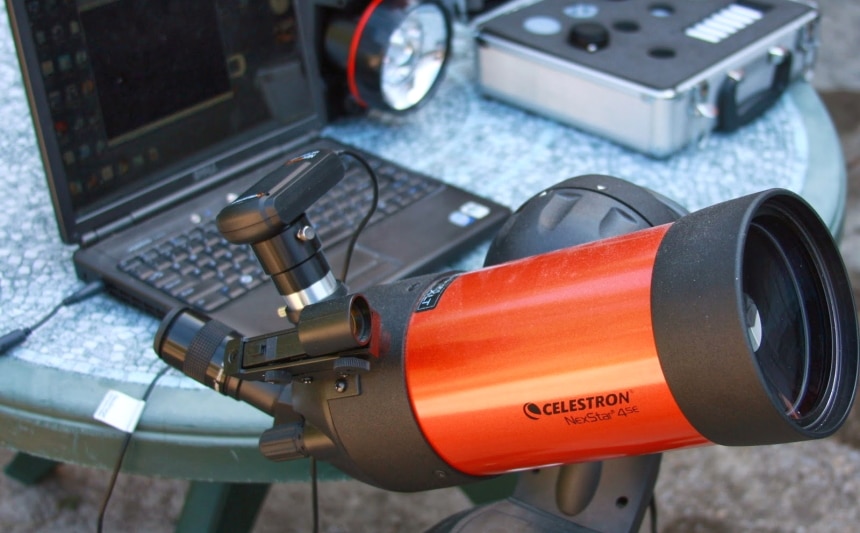
GoTo telescopes are likely built for beginners, and we have a couple of examples in the list above. The Celestron NexStar 4SE 11049 is one of them. This type of telescope is computerized and often comes with software that allows it to function.
Instead of having to look for astronomical objects manually, you select the object that you want to see, and the product points to it automatically. When you receive the telescope from the vendor, you might have to calibrate it. Also, these devices can even have upwards of 30,000 astronomical objects that you can access by pressing a button.
The green and red LED reticle patterns they project onto the area you are looking at can differentiate finders from other sighting devices. This helps with aiming the telescope. Reflex sights use a non-magnified method to help you point your telescope better. However, you should make sure that the finder or reflex sight you choose is at least 25mm.
A lot of you will be content with having your telescope at home where you can do some stargazing after a long day working. You should thus have no problems buying a bulky product. This is because it will be delivered to you, and after installation, it won’t have to be moved.
Others want to take their telescopes with them when they go on road trips or to the beach. Viewing your favorite nebulae may be different when you do it from a different location. For this to be possible, the telescope has to be compact and lightweight. You should ponder where you belong out of these two categories. That will help narrow down your telescope purchase options.
You are also likely to come across some extra features such as reverse functions, accessory trays, and more. After all, manufacturers are doing everything they can to be better than the competition. Take advantage of this if you can by buying telescopes with the most beneficial extra features.
For beginners and those who want to look at various components of the night sky without too much hassle, the Celestron NexStar 4SE 11049 is excellent. 40,000 astronomical objects can easily be viewed using this tool. Best of all, there is information provided about these objects on the device. This makes the Telescope a favorite for a lot of people.
Following that option on the list and in the rankings is the Meade StarNavigator NG, which is computerized. A library of 30,000 astronomical objects is provided. As such, it offers excellent value for new users as well as people who don’t want to spend loads of time looking for a particular Nebulae or planet.
For the best non-computerized option, the Sky Watcher Flextube 200P S11700 makes a convincing case. The focuser, mount, and aperture all work together to raise the standing of the telescope. Being collapsible for added portability also adds one more reason for you to make this purchase.
If you pick one telescope from these three or even from the whole list of five options above, you should be okay. This is as long as you take your needs into account. Additionally, incorporating all the information we have provided for you above should be a huge help.
